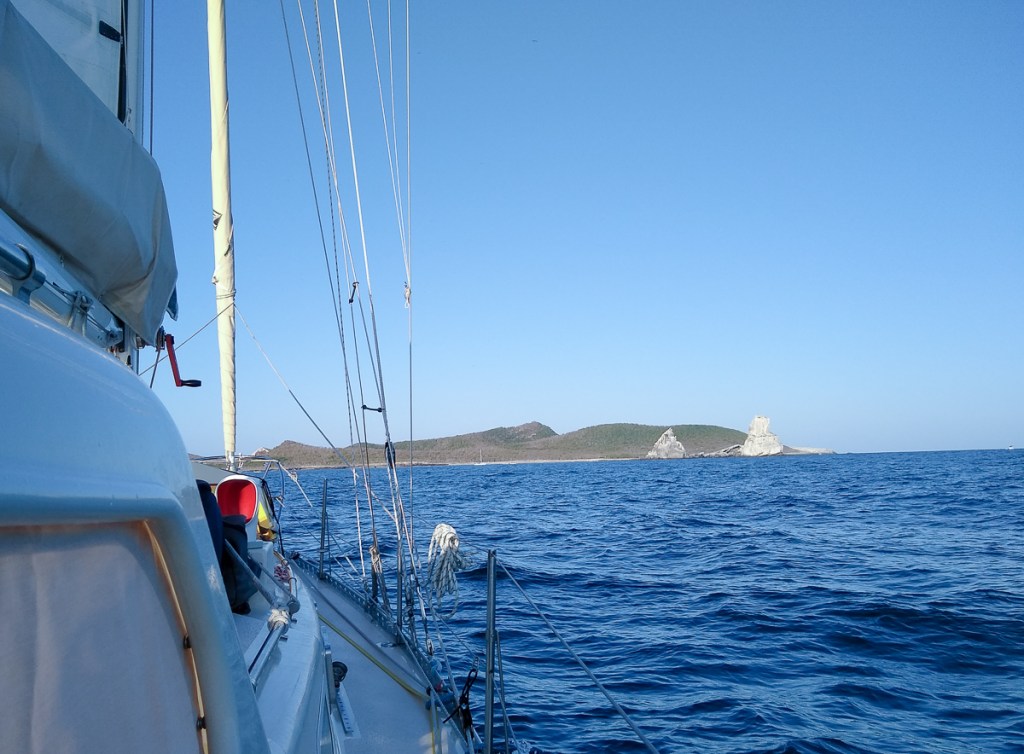
We almost skipped Isla Isabel this time. We estimated the passage time from Mazatlan to Isabel so that we’d arrive there just after daybreak. What we didn’t include in our time estimate was that winds near Mazatlan were getting us sailing speeds of around 7 knots for most of the afternoon rather than the 5 that we’d used to calculate the time. At the faster speed, we’d arrive at 3 am. The question became: do we continue on to Banderas Bay so we don’t have to anchor in the dark? Luckily, the wind decided to drop in the middle of the night and we ghosted up to Isabel at daylight. There was one other boat anchored on the east side of the island, Perspective, who we’d met in Pichelingue. Two more sailboats were anchored in the south anchorage off the fish camp. Our anchor down, we heard from Perspective on the radio. Were we up for a hike? Of course.
Isla Isabel is called the Galapagos of Mexico. The diving is excellent and often has ecotours staying at the old research station. There are iguanas endemic to the island. It’s also a protected habitat for blue footed boobies and magnificent frigate birds. When we were here last year, it was courtship season. This year, since we got here later, there were babies! We walked past nests right off the side of the path. The birds don’t get up as you go by, they just clack their beaks at you. At one point we saw a Blue Footed Booby courtship dance. It was very stately. The male would raise one blue foot and then the other, all while his tail feathers were erect. The female mostly ignored him and then would give him a nip. He kept up his dance, and then gave her a twig. We aren’t sure why, as their nests are a clean hollow in the dirt.

There are literally thousands of birds on Isabel. Frigate Birds build their nests in trees, Blue Footed Boobies on the ground in the dirt. The Booby nests are very clean and very exposed. Sometimes their nests are right under the Frigate Birds. The Frigates tend to leave the boobies alone until there is food, and then they turn into dive bombing bullies.
Bill snorkeled around the boat to check on the bottom. What he didn’t tell Nina was that he had the dinghy kill cord in his pocket. She saw something red float by and thought it was a hot sauce bottle or something. By the time Bill realized it was gone, it had been half an hour. We got in the dinghy and rowed in the general direction the red thing had drifted and managed to spot it with the binoculars. We got to it just before it floated into the rocks on shore. We can use the dinghy motor again! Lesson learned: if you see something, say something.

We ended up spending about three days at Isabel, a truly amazing place.
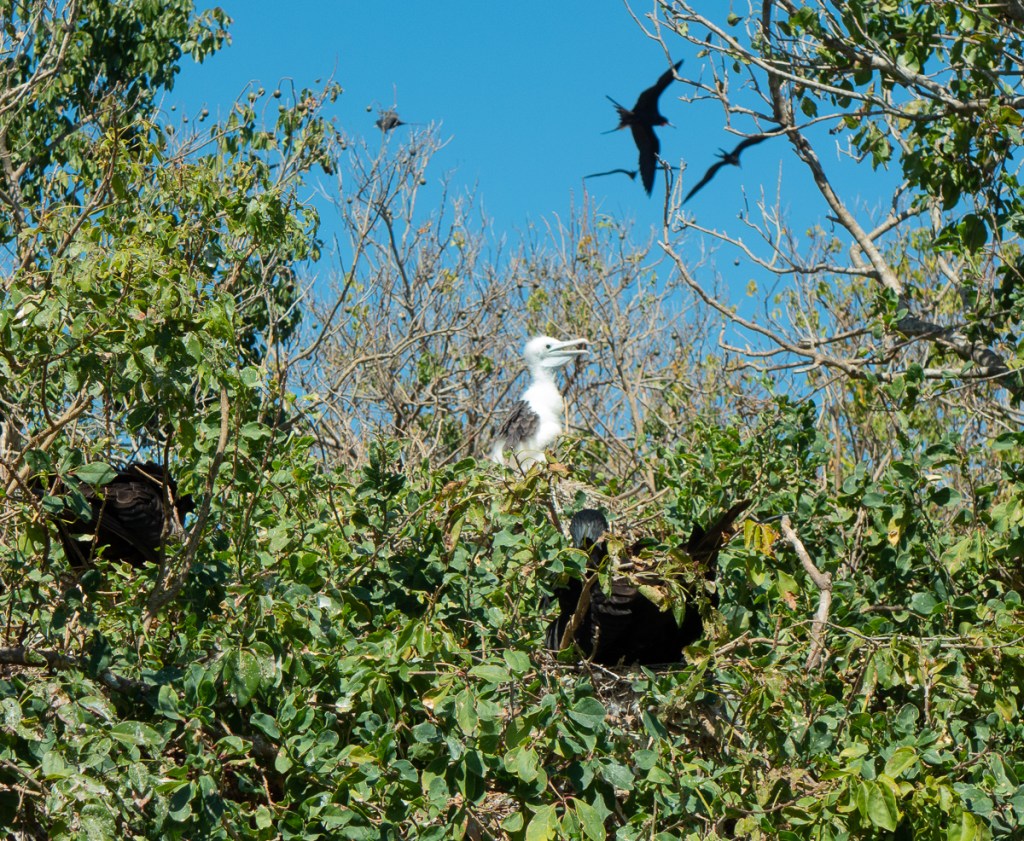




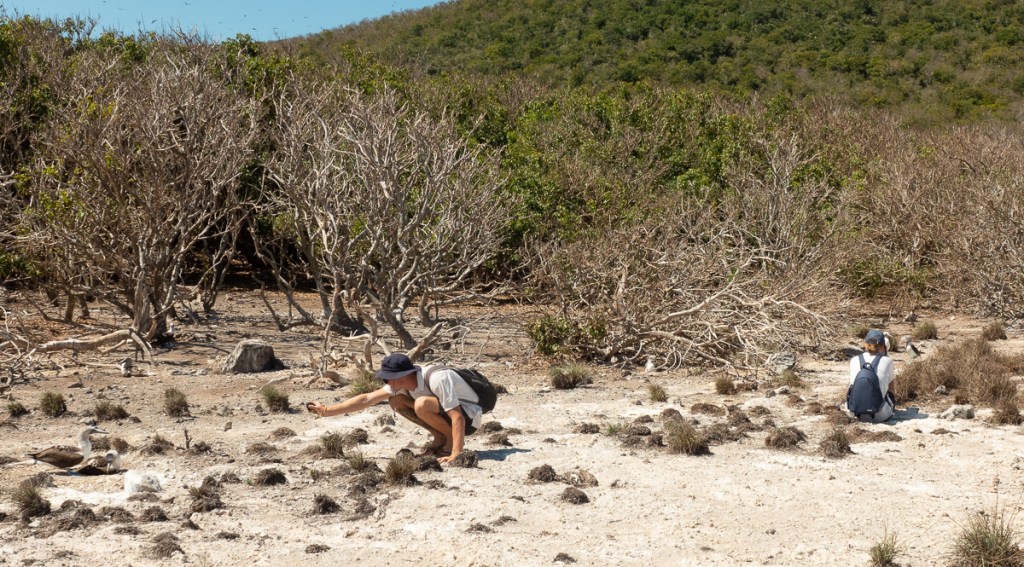
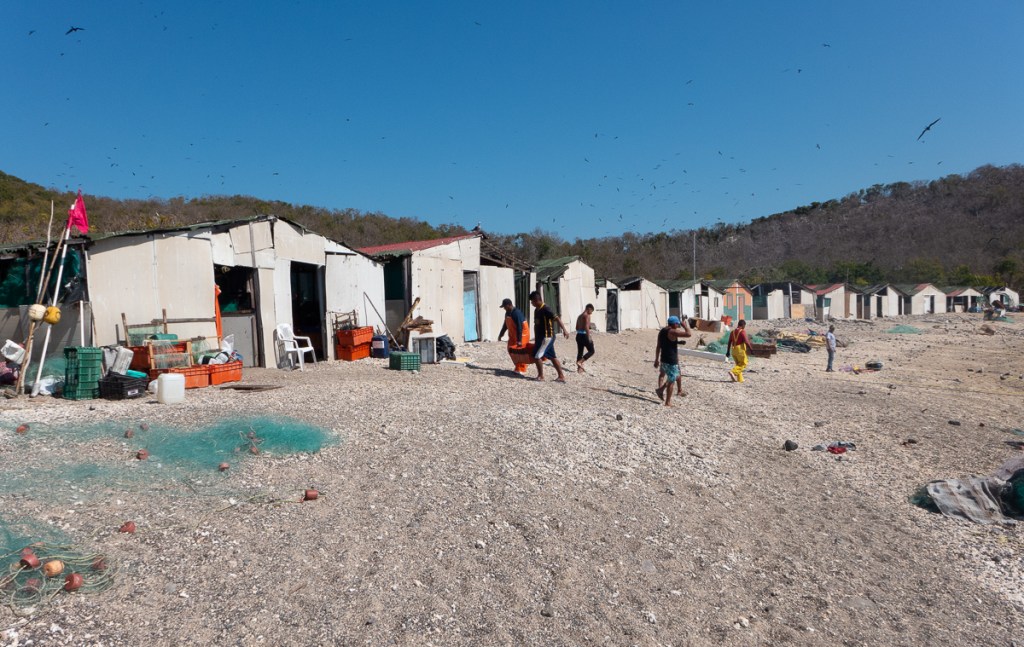



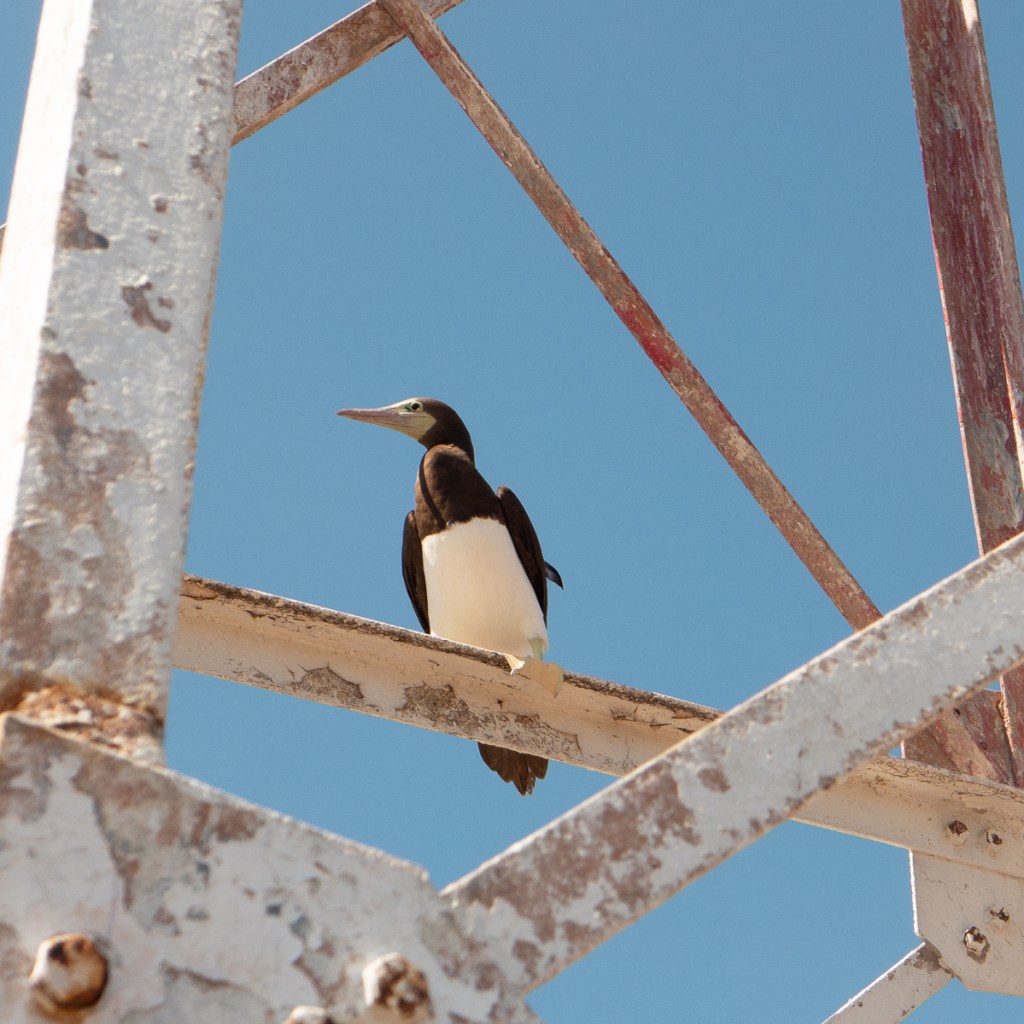
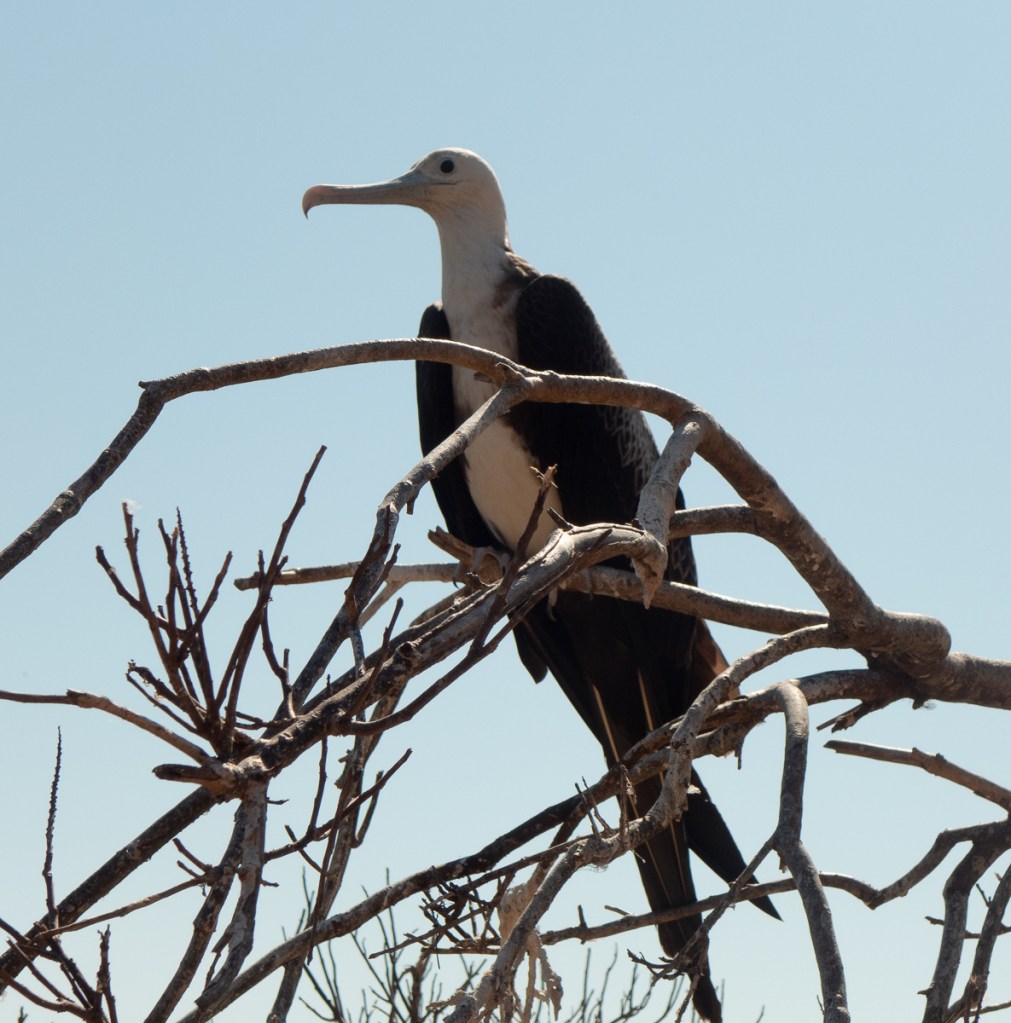
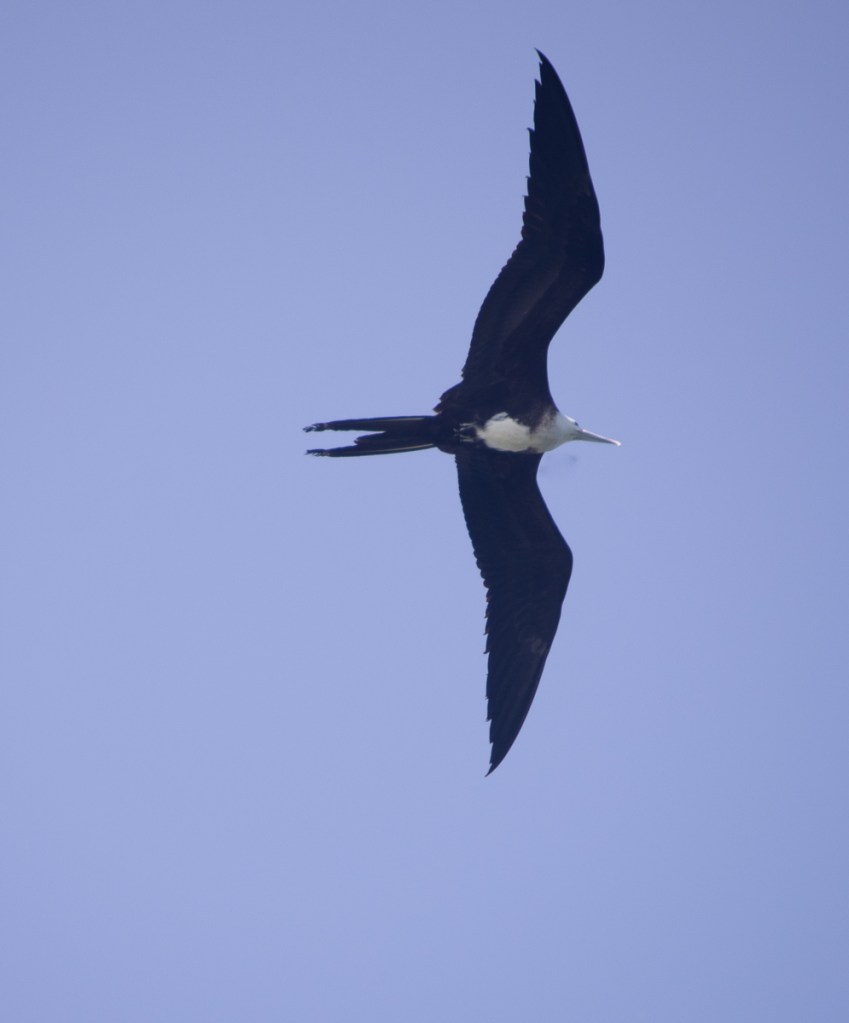
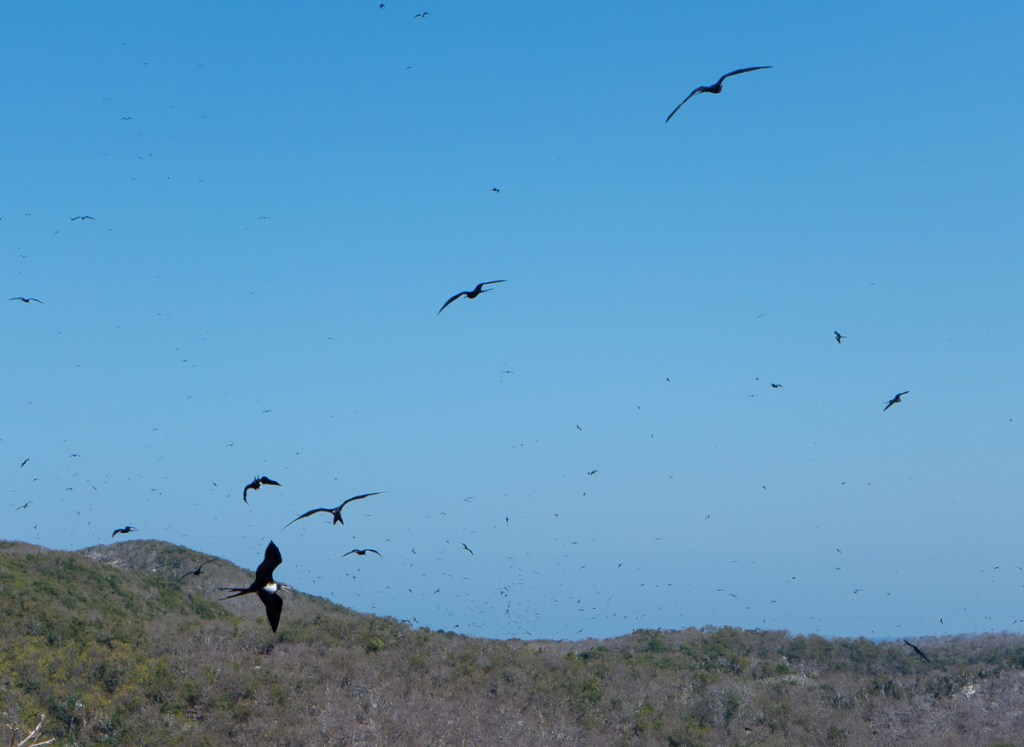


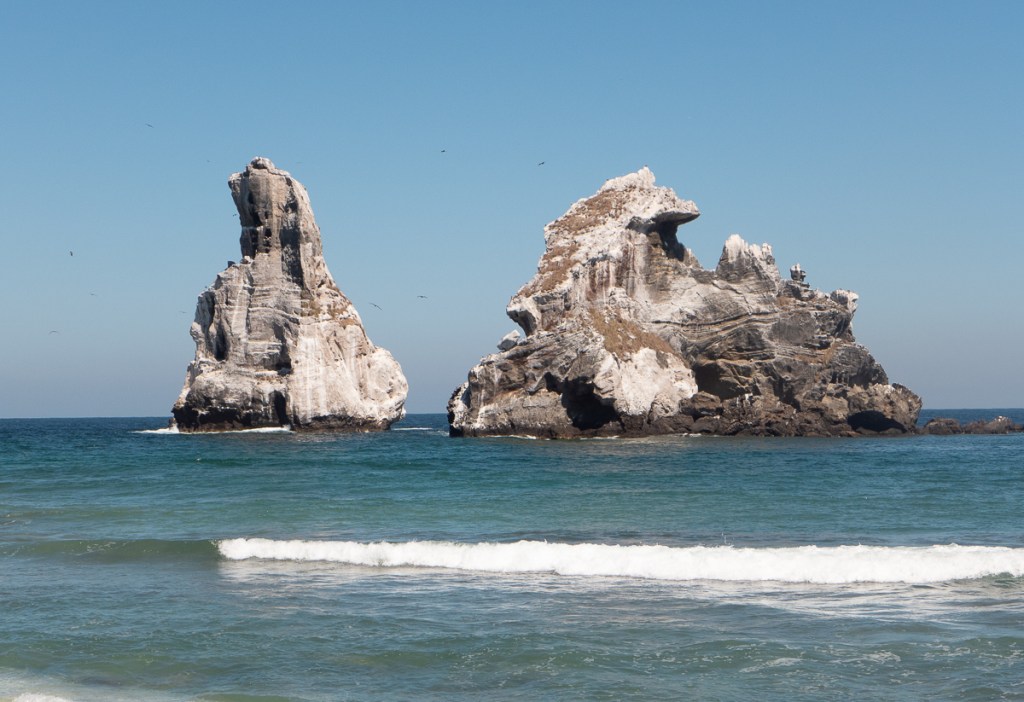
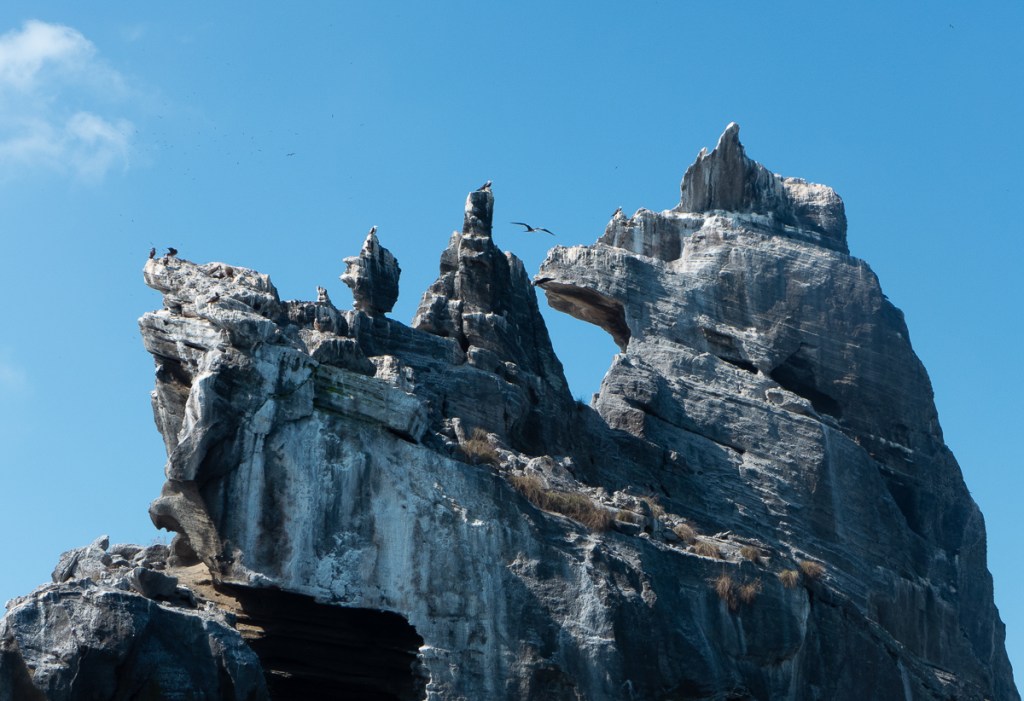
Awesome photos! Thank you so much for sharing your adventuress. 🙂
LikeLike
Thanks, we are glad you enjoyed the photos of Isla Isabel. It is a fun place to visit.
LikeLike
Love your blog!!!! We adore the birds of Mexico and I am really enjoying learning more about them. Those frigates, pelicans and boobies are our favorites! Buenas Noches! Lisa
LikeLike
Yes, Mexico does have great bird watching. There will be more birds to come.
LikeLike
many thanks again!! The last photo is Magnificent!!!
LikeLike
Glad you liked it. That one was a fun one to find.
LikeLike
These photos are breathtaking! So fun to follow your adventures and live vicariously!
LikeLike
We are happy to share the birds and the sunshine. Buen Dia
LikeLike
Some amazing pictures! Thanks for sharing!
LikeLike